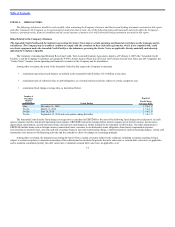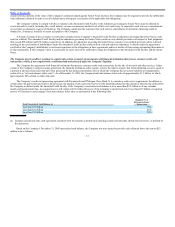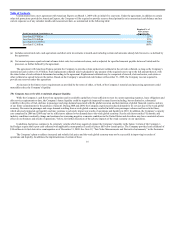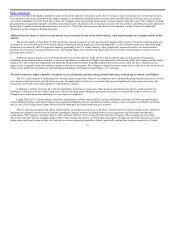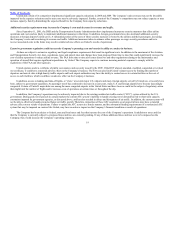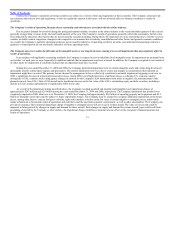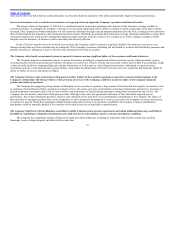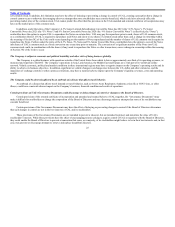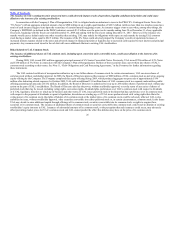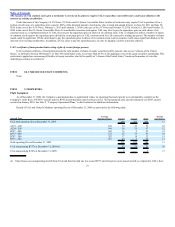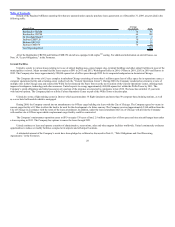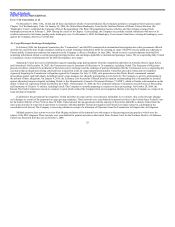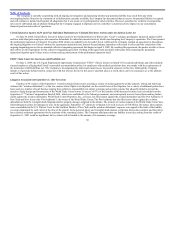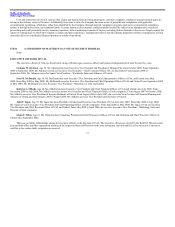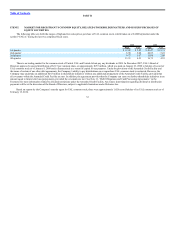United Airlines 2009 Annual Report Download - page 28
Download and view the complete annual report
Please find page 28 of the 2009 United Airlines annual report below. You can navigate through the pages in the report by either clicking on the pages listed below, or by using the keyword search tool below to find specific information within the annual report.
Table of Contents
material cash obligations. In addition, as of December 31, 2009, the Company had pledged a substantial amount of its assets as collateral to secure its various
fixed obligations. The Company’s high level of fixed obligations, a downgrade in the Company’s credit ratings, poor credit market conditions and the Company’s
limited amount of unencumbered assets available as collateral for loans or other indebtedness could impair the Company’s ability to obtain additional financing,
if needed, and reduce its flexibility to conduct its business. Certain of the Company’s existing indebtedness also require it to meet covenants and financial tests to
maintain ongoing access to those borrowings. See Note 11, “Debt Obligations and Card Processing Agreements,” and Note 21, “Subsequent Events,” in the
Footnotes for further details related to the Company’s credit agreements and assets pledged as collateral, as well as additional debt issued during early 2010. A
failure to timely pay its debts or other material uncured breaches of its contractual obligations could result in a variety of adverse consequences, including the
acceleration of the Company’s indebtedness, the withholding of credit card sale proceeds by its credit card service providers and the exercise of other remedies
by its creditors and equipment lessors that could result in material adverse effects on the Company’s financial position and results of operations. In such a
situation, it is unlikely that the Company would be able to fulfill its obligations to repay the accelerated indebtedness, make required lease payments, or otherwise
cover its fixed costs.
The Company’s net operating loss carry forward may be limited or possibly eliminated.
As of December 31, 2009, the Company had a net operating loss (“NOL”) carry forward tax benefit of approximately $2.7 billion for federal and state
income tax purposes which will expire over a five to twenty year period. This tax benefit is mostly attributable to federal pre-tax NOL carry forwards of $7.3
billion. If the Company were to have a change of ownership within the meaning of Section 382 of the U.S. Internal Revenue Code of 1986, as amended (the
“Code”), under certain conditions, its annual federal NOL utilization could be limited to an amount equal to its market capitalization at the time of the ownership
change multiplied by the federal long-term tax exempt rate, adjusted for certain built-in gains or losses. A change of ownership under Section 382 of the Code is
defined as a cumulative change of more than 50 percentage points or more in the ownership positions of certain stockholders owning 5% or more of UAL’s
common stock over a three year rolling period.
To reduce the risk of a potential adverse effect on the Company’s ability to utilize its NOL carry forwards for federal income tax purposes, UAL’s
amended and restated certificate of incorporation contains a 5% ownership limitation (the “5% Ownership Limitation”), applicable to all stockholders except the
Pension Benefit Guaranty Corporation (“PBGC”). The 5% Ownership Limitation remains effective until February 1, 2011, subject to further extension by the
UAL Board of Directors (the “Board of Directors”) and shareholders. The 5% Ownership Limitation prohibits (i) the acquisition by a single stockholder of shares
representing 5% or more of the common stock of UAL and (ii) any acquisition or disposition of common stock by a stockholder that already owns 5% or more of
UAL’s common stock, unless prior written approval is granted by the Board of Directors. The percentage ownership of a single stockholder can be computed by
dividing the number of shares of common stock held by the stockholder by the sum of the shares of common stock issued and outstanding plus the number of
shares of common stock still held in reserve for payment to unsecured creditors under the Debtors’ Second Amended Joint Plan of Reorganization pursuant to
Chapter 11 of the U.S. Bankruptcy Code (the “Plan of Reorganization”). For additional information regarding the 5% Ownership Limitation, please refer to
UAL’s restated certificate of incorporation available on its website.
While the purpose of these transfer restrictions is to prevent a change of ownership from occurring within the meaning of Section 382 of the Code (which
ownership change might materially and adversely affect the Company’s ability to utilize its NOL carry forward or other tax attributes), no assurance can be given
that such an ownership change will not occur, in which case the availability of the Company’s substantial NOL carry forward and other federal income tax
attributes might be significantly limited or possibly eliminated. Any transfers of common stock that are made in violation of the restrictions set forth above will
be void and, pursuant to UAL’s restated certificate of incorporation, will be treated as if such transfer never occurred. This provision may prevent a sale of
common stock by a stockholder and adversely affect the price at which a stockholder can
24


